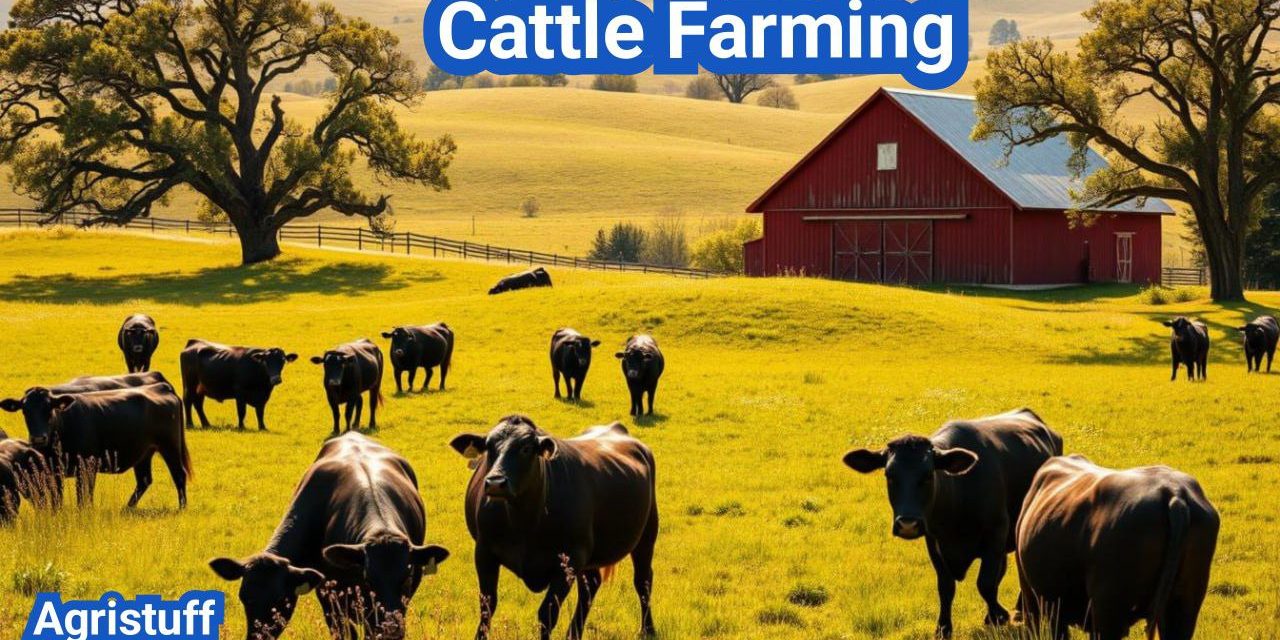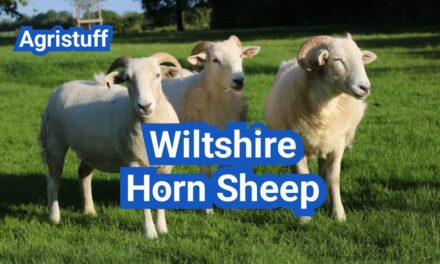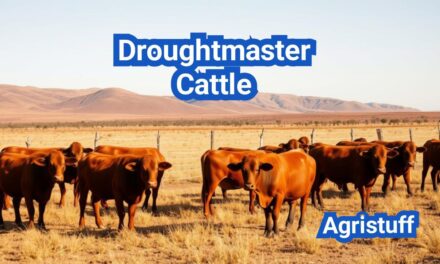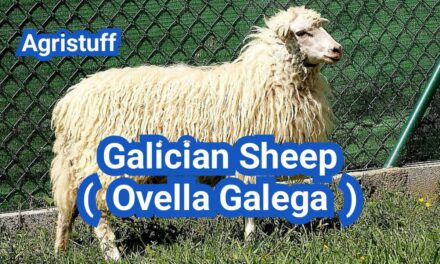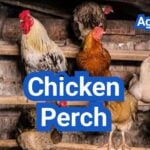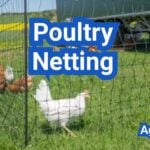Cattle farming is a vital part of agriculture and Livestock, involving livestock farming for meat, dairy, or breeding purposes. Understanding the basics of cattle production is crucial for anyone looking to start or improve a cattle farming operation.
Raising beef cattle for profit requires knowledge of various methods, costs, and popular breeds. Cattle farming encompasses a range of activities, from breeding and feeding to marketing and sales.
The definition of cattle farming revolves around the management of cattle for agricultural purposes. It’s a significant aspect of the agricultural industry, providing essential products.
Key Takeaways
- Understanding cattle farming basics is crucial for a successful operation.
- Cattle farming involves raising livestock for meat, dairy, or breeding.
- Knowledge of cattle farming methods and costs is essential.
- Popular breeds play a significant role in cattle farming.
- Cattle farming is a vital part of the agricultural industry.
What is Cattle Farming: Definition and Industry Overview
Cattle farming, which encompasses both beef and dairy production, is a vital part of American agriculture. It involves the raising of cattle for various purposes, including meat, dairy products, and sometimes labor.
The cattle farming industry is multifaceted, with different production systems and practices. Understanding the basics of cattle production is essential for appreciating its significance in the agricultural sector.
Definition and Scope of Modern Cattle Production
Modern cattle production refers to the practice of raising cattle using contemporary methods and technologies. This includes both intensive and extensive farming systems, with the former involving more controlled environments and the latter allowing cattle to roam more freely.
The scope of modern cattle production is vast, covering a wide range of activities from breeding and feeding to health management and marketing.
The Economic Impact of Cattle Farming in the United States
Cattle farming has a significant economic impact in the United States, contributing to employment, GDP, and the overall agricultural output. The industry supports a wide range of businesses, from feed suppliers to meatpackers.
The economic benefits of cattle farming are not limited to the farming operations themselves but also extend to related industries and rural communities.
| Economic Indicator | Value |
|---|---|
| Employment Supported | Millions |
| Annual GDP Contribution | Billions of Dollars |
| Agricultural Output | Significant portion of total U.S. agricultural production |
Beef vs. Dairy Production Systems
Beef and dairy production are two distinct aspects of cattle farming, each with its own production systems and challenges. Beef production focuses on raising cattle for meat, while dairy production is centered on milk production.
Understanding the differences between these two systems is crucial for farmers, policymakers, and consumers alike, as they have different requirements and implications for animal welfare, environmental impact, and economic viability.
- Beef Production: Focuses on raising cattle for meat, with breeds and production practices tailored to this purpose.
- Dairy Production: Centers on milk production, with a focus on breeds like Holsteins that are known for their high milk output.
Getting Started with Cattle Farming for Beginners

New entrants to cattle farming must be equipped with essential knowledge to navigate the challenges of this agricultural venture. Starting a cattle farm requires careful planning, including understanding the land requirements and necessary infrastructure.
Essential Knowledge Before Your First Purchase
Before diving into cattle farming, beginners should understand the basics of cattle production, including the different breeds and their characteristics. Raising beef cattle for profit requires knowledge of cattle behavior, nutrition, and health management.
It’s also crucial to research local regulations and market demands. Understanding the basics of cattle production will help beginners make informed decisions.
Land Requirements and Acreage Calculations
Land is a critical resource for cattle farming. The amount of land needed depends on several factors, including the type of cattle, grazing system, and climate. Acreage calculations should consider the carrying capacity of the land to ensure sustainable grazing practices.
For example, a general rule of thumb is to allocate at least 1-2 acres per cow, depending on the quality of the pasture. Beginners should assess their land’s potential and plan accordingly.
Basic Equipment and Infrastructure Needs
Cattle farming requires specific equipment and infrastructure, including fencing, water systems, and handling facilities. Cattle farming equipment should be durable and suitable for the size and type of operation.
- Fencing to secure pastures and protect cattle
- Watering systems to ensure access to clean water
- Handling facilities for safe cattle management
Learning Resources and Mentorship Opportunities
Beginners can benefit from various learning resources, including online courses, workshops, and mentorship programs. Learning resources can provide valuable insights into best practices and new technologies.
Connecting with experienced farmers through mentorship opportunities can offer practical guidance and support. This can be invaluable for navigating the challenges of cattle farming.
Developing a Comprehensive Cattle Farming Business Plan
To establish a thriving cattle farm, it’s essential to create a detailed business plan that outlines market analysis, financial projections, and risk management strategies. A well-structured business plan serves as a roadmap for farmers, guiding them through the complexities of the industry and helping them achieve their goals.
Market Analysis and Target Customer Identification
Conducting a thorough market analysis is crucial for understanding the demand for cattle products and identifying target customers. This involves researching market trends, analyzing consumer behavior, and assessing the competitive landscape. By doing so, farmers can tailor their production to meet the needs of their target market, increasing their chances of success.
Key components of market analysis include:
- Identifying market trends and patterns
- Analyzing consumer demand and preferences
- Assessing the competitive landscape
- Determining market share and potential revenue
Financial Projections and Funding Sources
Creating accurate financial projections is vital for securing funding and making informed decisions about the cattle farming operation. This includes estimating income statements, balance sheets, and cash flow statements. Farmers must also explore various funding sources, such as loans, grants, and investors, to determine the best options for their business.
Key considerations for financial projections include:
- Estimating start-up costs and ongoing expenses
- Projecting revenue and profit margins
- Assessing cash flow and funding requirements
- Identifying potential funding sources
Risk Management Strategies
Cattle farming is associated with various risks, including market fluctuations, disease outbreaks, and environmental factors. Developing effective risk management strategies is crucial for mitigating these risks and ensuring the long-term sustainability of the operation.
Some key risk management strategies include:
- Diversifying products and revenue streams
- Implementing disease prevention and control measures
- Developing contingency plans for environmental disasters
- Investing in insurance and other risk management tools
Setting Realistic Goals and Timelines
Establishing realistic goals and timelines is essential for measuring progress and achieving success in cattle farming. This involves setting specific, measurable, achievable, relevant, and time-bound (SMART) objectives, as well as creating a timeline for achieving these goals.
Key considerations for setting realistic goals include:
- Defining clear and achievable objectives
- Establishing measurable performance indicators
- Creating a realistic timeline for achieving goals
- Regularly reviewing and adjusting goals as needed
Cattle Farming Methods and Production Systems
The cattle farming industry employs diverse methods and production systems, each with its own set of advantages and challenges. Understanding these different approaches is crucial for farmers to optimize their operations and achieve their goals.
Intensive vs. Extensive Farming Approaches
Cattle farming can be broadly categorized into intensive and extensive farming approaches. Intensive animal farming involves raising cattle in confined spaces with a focus on maximizing production efficiency. This method requires significant investment in infrastructure and feed.
In contrast, extensive farming allows cattle to roam over larger areas, often grazing on pasturelands. This approach can be more cost-effective and is often associated with better animal welfare.
Rotational and Management-Intensive Grazing
Rotational grazing is a technique that involves moving cattle to different grazing areas to optimize pasture use and reduce environmental impact. Management-intensive grazing takes this a step further by closely monitoring and managing grazing patterns to enhance pasture health and productivity.
- Improved soil health
- Increased biodiversity
- Better water retention
Feedlot Operations and Finishing Systems
Feedlot operations involve raising cattle in confined areas and feeding them a diet designed to promote rapid growth. Finishing systems are used to prepare cattle for market by feeding them a specific diet to achieve desired marbling and weight.
- Backgrounding: Growing cattle before they enter the feedlot
- Finishing: The final stage of feeding before market
Sustainable and Organic Cattle Management
Sustainable cattle management focuses on practices that minimize environmental impact while maintaining economic viability. Organic cattle management adheres to strict standards that prohibit the use of synthetic fertilizers, pesticides, and genetically modified organisms (GMOs).
Key practices include:
- Regenerative agriculture techniques
- Use of natural fertilizers
- Integrated pest management
Setting Up Your Cattle Farm Infrastructure

Proper infrastructure is the foundation upon which a thriving cattle farm is built, encompassing various critical components.
Fencing Options and Paddock Design
Fencing is a crucial aspect of cattle farming infrastructure, serving to contain the animals, protect the surrounding environment, and manage grazing patterns.
The choice of fencing depends on factors such as the type of cattle, terrain, and farm management practices. Common fencing options include:
- Barbed wire fencing: Cost-effective but may not be suitable for all cattle types.
- High-tensile wire fencing: Durable and versatile, suitable for most cattle operations.
- Electric fencing: Provides a psychological barrier and is often used for rotational grazing.
Paddock design should consider factors like size, shape, and accessibility to water and handling facilities.
Water Systems and Access Points
Adequate water supply is essential for cattle health and productivity. A well-designed water system should ensure:
- Reliable water sources, such as wells or municipal supplies.
- Efficient distribution systems, including pipes and troughs.
- Multiple access points to prevent congestion and ensure all animals have access.
Cattle Barns and Shelter Requirements
Cattle barns provide shelter from extreme weather conditions, improve animal welfare, and can enhance farm productivity.
Key considerations for cattle barns include:
- Ventilation and climate control.
- Bedding material and management.
- Space allocation per animal.
Handling Facilities and Working Equipment
Efficient handling facilities are crucial for managing cattle, reducing labor costs, and improving animal handling.
A well-designed handling system includes:
| Component | Description | Benefits |
|---|---|---|
| Chutes | Narrow passageways for restraining cattle | Safe handling, reduced stress |
| Crowding pens | Areas that funnel cattle into handling chutes | Efficient processing, labor savings |
| Squeeze chutes | Equipment for restraining cattle during procedures | Improved safety for both cattle and handlers |
“The way we manage our cattle is a reflection of our values as farmers and our commitment to animal welfare and environmental stewardship.” – Temple Grandin
By investing in appropriate infrastructure, cattle farmers can improve the efficiency, safety, and profitability of their operations.
Popular Beef Cattle Breeds for American Farmers
The United States is home to a diverse range of beef cattle breeds, each with its unique characteristics and advantages. American farmers can choose from a variety of breeds to suit their farming goals, climate, and market demands.
Angus and Black Angus: The American Standard
Angus and Black Angus are among the most popular beef cattle breeds in the United States. Known for their high-quality beef, they are prized for their marbling, which enhances the tenderness and flavor of the meat. Angus cattle are hardy and adaptable, making them suitable for various farming conditions across the country.
Hereford, Charolais, and Simmental
Other prominent breeds include Hereford, Charolais, and Simmental. Hereford cattle are known for their rustic hardiness and ease of handling, making them a favorite among many farmers. Charolais and Simmental are recognized for their rapid growth rates and lean muscle mass, which are advantageous in beef production.
- Hereford: Hardy and easy to handle
- Charolais: Fast growth rate and lean muscle
- Simmental: Known for growth rate and muscular development
Specialty Beef Breeds: Wagyu and Piedmontese
Specialty breeds like Wagyu and Piedmontese offer unique qualities. Wagyu cattle are renowned for their exceptional marbling and rich flavor, commanding premium prices in the market. Piedmontese cattle are known for their lean meat and muscular hypertrophy, appealing to consumers looking for healthier beef options.
“The quality of beef from Wagyu cattle is unparalleled, with its intense marbling and rich flavor profile.” –
Cattle Industry Expert
Heritage Breeds: Texas Longhorns and Belted Galloway
Heritage breeds such as Texas Longhorns and Belted Galloway are valued for their historical significance and unique characteristics. Texas Longhorns are hardy and resistant to disease, while Belted Galloway are known for their distinctive appearance and high-quality beef. These breeds contribute to the genetic diversity of the cattle population and are often sought after by specialty producers.
By understanding the characteristics and advantages of these popular beef cattle breeds, American farmers can make informed decisions to enhance their cattle farming operations.
Productive Dairy Cattle Breeds and Characteristics

Understanding the different dairy cattle breeds and their characteristics is essential for making informed decisions in dairy farming. The choice of dairy breed depends on several factors, including milk production goals, farm conditions, and market demands.
Holstein and Holstein Friesian: High-Volume Producers
The Holstein breed is renowned for its high milk production, making it one of the most popular dairy breeds worldwide. Originating from the Netherlands, Holsteins are known for their black and white markings, although red and white variants exist. They produce an average of 22,000 to 24,000 pounds of milk per year, with a high butterfat content.
Key Characteristics of Holsteins:
- High milk production volume
- Average milk fat percentage: 3.65%
- Protein content: 3.0%
- Robust health and longevity with proper management
Jersey and Guernsey: Quality Over Quantity
Jersey and Guernsey breeds are known for their rich milk quality rather than high volume. The Jersey breed, originating from the Channel Island of Jersey, produces milk with a high butterfat content, making it ideal for cheese production. Guernsey cows, from the island of Guernsey, also produce rich milk with a distinct golden color due to its high beta-carotene content.
| Breed | Milk Production (lbs/year) | Butterfat (%) | Protein (%) |
|---|---|---|---|
| Jersey | 14,000 – 16,000 | 4.9 | 3.8 |
| Guernsey | 13,000 – 15,000 | 4.7 | 3.5 |
Ayrshire, Brown Swiss, and Other Dairy Options
Ayrshire and Brown Swiss are other notable dairy breeds. Ayrshires are known for their hardiness and efficiency in grazing systems, producing milk with a good balance of fat and protein. Brown Swiss, one of the oldest dairy breeds, offers a robust constitution and high milk production with a good fat content.
Other dairy breeds worth considering include:
- Milking Shorthorn
- Normande
- Montbéliarde
Selecting the Best Dairy Breed for Your Operation
When selecting a dairy breed, consider factors such as climate adaptability, milk market demand, and farm management practices. It’s also crucial to assess the breed’s disease resistance and overall hardiness.
Ultimately, the best dairy breed for your operation will depend on your specific goals, resources, and market conditions. Consulting with local dairy farmers, veterinarians, and agricultural experts can provide valuable insights tailored to your region.
Miniature and Specialty Cattle Breeds

Specialty cattle breeds, including miniature varieties, are becoming increasingly popular for their distinct traits and market demand. These breeds offer farmers and hobbyists unique opportunities for diversification and profitability in the cattle industry.
Miniature Cattle Varieties: Dexter and Lowline Angus
Miniature cattle breeds like Dexter and Lowline Angus are gaining traction among small-scale farmers due to their compact size and manageable needs. Dexter cattle, originating from Ireland, are known for their hardiness and versatility, providing both milk and meat. Lowline Angus, a smaller version of the traditional Angus breed, retains the high-quality beef characteristics while requiring less land and feed.
Micro and Mini Cattle for Small Acreage
For landowners with limited acreage, micro and mini cattle breeds present an attractive option. These smaller cattle require less space, feed, and infrastructure compared to their full-sized counterparts. They are ideal for small farms or even hobby farming, offering the benefits of cattle ownership without the extensive resources required for larger breeds.
Miniature Highland Cows and Fluffy Breeds
Miniature Highland cows are another popular choice, known for their shaggy coats and gentle disposition. These cattle are well-suited to harsh climates and require minimal maintenance. Other “fluffy” breeds, like the Highland and fluffy Angus, are prized for their unique appearance and temperament.
Economic Viability of Specialty Breed Operations
The economic viability of raising specialty and miniature cattle breeds depends on several factors, including market demand, breed selection, and management practices. A well-managed operation can capitalize on niche markets, commanding premium prices for unique products like miniature beef or specialty dairy products.
| Breed | Characteristics | Market Demand |
|---|---|---|
| Dexter | Hardy, versatile, milk and meat production | High for specialty dairy and beef |
| Lowline Angus | Compact, high-quality beef | Strong for premium beef products |
| Miniature Highland | Shaggy coats, hardy, gentle | Growing for unique breeding stock |
By understanding the characteristics and market demand for these breeds, farmers can make informed decisions about incorporating miniature and specialty cattle into their operations, potentially enhancing their profitability and sustainability.
Cattle Nutrition and Feeding Management

Nutrition plays a vital role in cattle farming, directly impacting the health and productivity of the herd. Effective cattle nutrition and feeding management are crucial for maintaining a successful and sustainable cattle farming operation.
Pasture Management for Optimal Nutrition
Pasture management is a critical aspect of cattle nutrition. Proper grazing techniques can significantly enhance the nutritional quality of the pasture. Rotational grazing is a widely recommended practice that involves rotating cattle through different paddocks to maintain pasture health and productivity.
Implementing rotational grazing requires careful planning, including dividing pastures into smaller paddocks, developing a grazing schedule, and monitoring pasture health. This approach not only improves cattle nutrition but also helps in maintaining soil quality and reducing environmental impact.
Supplemental Feed Requirements and Formulation
While pasture provides the primary source of nutrition for grazing cattle, supplemental feeding is often necessary to ensure that nutritional needs are fully met. The formulation of supplemental feed depends on factors such as the age, breed, and production level of the cattle, as well as the quality of the available pasture.
Common supplements include grains like corn and barley, protein sources such as soybean meal, and minerals and vitamins. The key is to provide a balanced diet that complements the pasture without overfeeding, which can lead to increased costs and potential health issues.
Seasonal Feeding Considerations
Cattle nutritional needs vary with the seasons due to changes in pasture quality and availability. During periods of drought or winter, when pasture quality declines, farmers may need to adjust their feeding strategies to maintain optimal nutrition.
- Monitoring pasture conditions regularly
- Adjusting grazing schedules as needed
- Providing appropriate supplements during times of nutritional deficiency
Feed Efficiency and Cost Management Strategies
Improving feed efficiency is crucial for reducing the costs associated with cattle feeding. Strategies to enhance feed efficiency include selecting cattle breeds known for their feed efficiency, optimizing feeding practices, and minimizing feed waste.
| Strategy | Description | Potential Benefit |
|---|---|---|
| Breed Selection | Choosing breeds with high feed efficiency | Reduced feed costs |
| Optimized Feeding Practices | Tailoring feeding to the nutritional needs of the cattle | Improved productivity |
| Minimizing Feed Waste | Implementing feeding systems that reduce waste | Lower overall feeding costs |
By focusing on these aspects of cattle nutrition and feeding management, farmers can improve the health and productivity of their herds while maintaining a sustainable and cost-effective operation.
Cattle Health Management and Veterinary Care

Cattle health management is a multifaceted approach that involves preventative measures, vaccinations, and parasite control. Maintaining the health of your cattle is crucial for maximizing productivity and profitability on your farm.
Preventative Health Protocols
Preventative health protocols are essential for maintaining a healthy herd. These protocols include regular monitoring of cattle health, providing a clean and safe living environment, and implementing biosecurity measures to prevent disease introduction and spread.
Key components of preventative health protocols:
- Regular health checks
- Proper nutrition and hydration
- Clean and safe living conditions
- Biosecurity measures
Vaccination Schedules and Requirements
Vaccinations play a critical role in preventing disease outbreaks in cattle. Developing a vaccination schedule in consultation with a veterinarian is essential to ensure that your cattle are protected against common diseases.
| Disease | Vaccination Frequency | Age of Vaccination |
|---|---|---|
| IBR (Infectious Bovine Rhinotracheitis) | Annually | 6 months |
| BVD (Bovine Viral Diarrhea) | Annually | 6 months |
| Leptospirosis | Annually | 6 months |
Parasite Control Programs
Parasite control is vital for maintaining cattle health. Internal parasites such as worms can significantly impact cattle productivity and overall health.
Effective parasite control measures include:
- Regular monitoring for parasite infestations
- Strategic deworming programs
- Pasture management techniques
Working with Veterinarians and Health Records
Developing a strong working relationship with a veterinarian is crucial for maintaining cattle health. Veterinarians can provide valuable guidance on health protocols, vaccination schedules, and parasite control measures.
Maintaining accurate health records is essential for:
- Tracking vaccination history
- Monitoring health issues
- Making informed management decisions
Breeding and Reproduction Management

Breeding and reproduction management strategies are vital components of a successful cattle farming business, influencing both short-term outcomes and long-term sustainability. Effective management in this area can lead to improved herd quality, increased productivity, and enhanced profitability.
Breeding Systems and Selection Criteria
The choice of breeding system significantly impacts the overall performance of a cattle operation. Farmers can opt for various breeding systems, including purebreeding, crossbreeding, or rotational crossbreeding, each with its advantages and challenges. Selection criteria for breeding cattle typically include factors such as growth rate, fertility, milk production, and conformation.
Key considerations in breeding system selection:
- Genetic diversity
- Desired production traits
- Environmental adaptability
- Market demands
Artificial Insemination vs. Natural Breeding
Cattle producers can choose between artificial insemination (AI) and natural breeding. AI offers several advantages, including access to superior genetics, reduced risk of disease transmission, and easier record-keeping. However, it requires specialized skills and equipment.
| Breeding Method | Advantages | Disadvantages |
|---|---|---|
| Artificial Insemination | Access to superior genetics, reduced disease risk | Requires specialized skills and equipment |
| Natural Breeding | Simpler to implement, lower initial cost | Limited genetic control, higher disease risk |
Calving Season Management and Assistance
Effective calving season management is critical for minimizing losses and ensuring the health of both cows and calves. This involves careful planning, monitoring, and assistance when necessary.
Key aspects of calving season management include:
- Proper nutrition for pregnant cows
- Monitoring cow health and behavior
- Assistance during difficult births
- Record-keeping for future reference
Genetic Improvement Strategies for Your Herd
Genetic improvement is a long-term strategy that can significantly enhance the productivity and profitability of a cattle operation. This involves selecting for desirable traits, using performance records, and potentially incorporating genomic information.
Steps for genetic improvement:
- Define breeding objectives
- Select breeding stock based on performance records
- Consider using genomic testing
- Monitor progress and adjust strategies as needed
Cattle Farming Costs and Financial Management

To establish a sustainable cattle farming operation, it’s vital to comprehend the associated costs and financial management strategies. Effective financial planning is crucial for navigating the complexities of the cattle farming industry.
Initial Setup and Capital Investment Requirements
The initial investment for cattle farming can be substantial, including costs associated with land acquisition or leasing, infrastructure development, and the purchase of cattle and equipment. The initial setup costs can vary widely depending on factors such as the size of the operation, the breed of cattle, and the farming methods employed.
- Land preparation and fencing
- Purchasing cattle and initial herd development
- Equipment and infrastructure (watering systems, barns, handling facilities)
- Initial veterinary care and vaccinations
Initial Investment Breakdown
| Category | Estimated Cost |
|---|---|
| Land Preparation | $5,000 – $10,000 |
| Cattle Purchase | $10,000 – $50,000 |
| Equipment and Infrastructure | $8,000 – $20,000 |
Ongoing Operational Expenses
Ongoing operational expenses in cattle farming include feed, veterinary care, labor, and equipment maintenance. Managing these costs effectively is crucial for maintaining profitability.
- Feed and nutrition costs
- Veterinary care and health management
- Labor costs and farm management
- Equipment maintenance and repairs
Marketing and Sales Strategies
Developing effective marketing and sales strategies is critical for cattle farmers to ensure they can sell their products at competitive prices. This involves understanding market trends, identifying target customers, and creating a brand identity.
- Market research and analysis
- Branding and product differentiation
- Sales channels and distribution networks
- Promotional activities and advertising
Profitability Analysis and Financial Benchmarks
Conducting regular profitability analysis and establishing financial benchmarks are essential for evaluating the performance of a cattle farming operation. This involves tracking income and expenses, analyzing cash flow, and comparing performance against industry standards.
By understanding and managing cattle farming costs and financial management effectively, farmers can improve their profitability and ensure the long-term sustainability of their operations.
Sustainable Practices in Modern Cattle Farming

Modern cattle farming is embracing sustainability to improve efficiency and reduce environmental impact. As the global demand for meat and dairy products continues to rise, the industry is under increasing pressure to adopt practices that minimize its ecological footprint while maintaining productivity.
Environmental Impact Mitigation Techniques
Cattle farming can have significant environmental impacts, including deforestation, water pollution, and greenhouse gas emissions. To mitigate these effects, farmers are adopting various techniques such as rotational grazing, which helps maintain soil health and reduce erosion. Additionally, the use of cover crops and conservation tillage can enhance soil fertility and structure, reducing the need for synthetic fertilizers and pesticides.
Another approach is the implementation of manure management systems, which can significantly reduce water pollution by properly handling and utilizing animal waste. These systems can also produce biogas, providing a renewable energy source for farm operations.
Carbon Footprint Reduction Strategies
Reducing the carbon footprint of cattle farming is crucial for mitigating climate change. One effective strategy is the use of regenerative agriculture practices, which focus on improving soil health through techniques like no-till or reduced-till farming, and incorporating diverse crop rotations. This not only sequesters carbon in the soil but also enhances biodiversity and improves water retention.
Improving feed efficiency is another key strategy. By optimizing cattle diets and using feed additives that reduce methane emissions, farmers can lower the overall carbon footprint of their operations. Moreover, selecting cattle breeds that are well-adapted to the local environment and have lower maintenance requirements can also contribute to reduced emissions.
Water Conservation and Management
Water conservation is essential in cattle farming, as the industry is a significant user of water resources. Implementing efficient irrigation systems and practices like drip irrigation can help reduce water waste. Additionally, creating ponds or reservoirs to harvest rainwater can provide a supplementary water source during dry periods.
Managing grazing patterns to avoid overgrazing near water sources is also crucial. This helps maintain water quality by reducing sediment and nutrient runoff. Furthermore, implementing water-saving technologies in dairy operations, such as water recycling systems, can significantly reduce the overall water footprint.
Regenerative Agriculture Approaches for Cattle Operations
Regenerative agriculture is gaining popularity in cattle farming due to its potential to enhance ecosystem services while improving farm productivity. This approach involves practices like holistic grazing management, which mimics natural grazing patterns to improve soil health and promote biodiversity.
By integrating livestock grazing with crop production, farmers can create more diverse and resilient farming systems. This integration can enhance nutrient cycling, reduce the need for external inputs, and promote ecological balance. Regenerative agriculture not only helps in sequestering carbon but also improves the overall health and productivity of the farm ecosystem.
Regulatory Compliance and Certification Programs
Cattle producers face a myriad of regulatory challenges, including USDA regulations and certification programs that are critical to their business. Ensuring regulatory compliance is not only legally necessary but also crucial for maintaining market access and consumer trust.
USDA Regulations for Cattle Producers
The USDA sets forth various regulations that cattle producers must adhere to, including those related to animal health, welfare, and environmental impact. Compliance with these regulations is mandatory for all cattle farming operations.
- Animal identification and tracking
- Vaccination and disease control measures
- Environmental regulations, including waste management
Organic and Natural Certification Requirements
Many cattle producers opt for organic or natural certification to differentiate their products in the market. These certifications come with specific requirements regarding feed, living conditions, and the use of antibiotics or hormones.
| Certification Type | Key Requirements | Benefits |
|---|---|---|
| Organic | 100% organic feed, no antibiotics or hormones | Premium pricing, access to organic markets |
| Natural | No antibiotics, hormones, or animal by-products | Market differentiation, consumer trust |
Animal Welfare Standards and Compliance
Animal welfare is a growing concern among consumers, and cattle producers must adhere to certain standards to ensure the humane treatment of their animals. This includes providing adequate living conditions, nutrition, and healthcare.
Implementing animal welfare standards not only improves the lives of the animals but can also enhance the reputation and marketability of the farm.
Record-Keeping Systems and Best Practices
Effective record-keeping is essential for demonstrating compliance with regulatory requirements and certification standards. This includes maintaining detailed records of animal health, feed, breeding, and sales.
Best practices for record-keeping include using digital tools for efficiency and accuracy, regularly updating records, and ensuring that all staff are trained in record-keeping procedures.
Building a Successful Cattle Farming Operation
Building a successful cattle farming operation requires careful planning, effective management, and a commitment to sustainability. By understanding the basics of cattle farming, developing a comprehensive business plan, and selecting the right breeds and production systems, farmers can establish a thriving cattle farm.
Key to success is also managing cattle nutrition and health, implementing sustainable practices, and ensuring regulatory compliance. By following the guidance provided in this article, farmers can navigate the complexities of cattle farming and achieve profitability.
Successful cattle farming involves continuous learning and adaptation. Staying informed about best practices, market trends, and environmental stewardship is crucial for long-term success in building a cattle farm.
FAQ
What is cattle farming, and what are its main purposes?
Cattle farming is the practice of raising cattle for various purposes, including meat, dairy, or breeding. It is a significant aspect of agriculture, contributing to employment and GDP.
What are the differences between beef and dairy production systems?
Beef production focuses on raising cattle for meat, while dairy production is centered on milk production. Understanding these differences is essential for farmers to decide which path to pursue.
How do I start a cattle farm as a beginner?
Starting a cattle farm requires careful planning, including understanding land requirements, necessary infrastructure, and seeking out learning resources and mentorship.
What is the importance of a business plan for cattle farming?
A comprehensive business plan is crucial for the success of a cattle farm, helping farmers to anticipate challenges and opportunities, including market analysis, financial projections, and risk management.
What are the different cattle farming methods and production systems?
Farmers can choose from various methods, including intensive and extensive farming, rotational grazing, and sustainable practices, each with its advantages and challenges.
What infrastructure is necessary for a cattle farm?
Proper infrastructure includes fencing, water systems, barns, and handling facilities, essential for the efficient and humane management of cattle.
What are some popular beef cattle breeds in the United States?
Popular breeds include Angus, Hereford, Charolais, and Simmental, each with their characteristics and advantages suited to different farming goals and environments.
What dairy cattle breeds are commonly used, and what are their characteristics?
Common dairy breeds include Holstein, Jersey, and Guernsey, with characteristics such as milk production volume and quality varying between breeds.
What are miniature and specialty cattle breeds, and are they economically viable?
Miniature breeds, such as Dexter and Lowline Angus, can be an attractive option for small farms or unique cattle. Their economic viability depends on various factors, including market demand.
How do I manage cattle nutrition and feeding?
Proper cattle nutrition involves pasture management, supplemental feeding, and seasonal feeding considerations to ensure optimal health and productivity.
Why is cattle health management important, and what practices are involved?
Maintaining cattle health is crucial for the success of a cattle farm, involving preventative measures, vaccinations, parasite control, and working with veterinarians.
What are the key aspects of breeding and reproduction management?
Effective breeding and reproduction management involve breeding systems, artificial insemination, calving season management, and genetic improvement strategies.
What are the costs associated with cattle farming, and how can I manage them?
Understanding initial investment, ongoing expenses, and implementing financial management strategies are crucial for the sustainability of a cattle farm.
How can I make my cattle farming operation more sustainable?
Implementing sustainable practices, such as reducing environmental impact, promoting regenerative agriculture, and conserving water, is increasingly important in modern cattle farming.
What regulatory requirements must I comply with as a cattle producer?
Compliance with USDA regulations, organic and natural certification requirements, animal welfare standards, and maintaining proper records is essential for the legal operation of a cattle farm.
Conclusion of: Cattle Farming Basics | Methods, Costs and Breeds
Cattle farming is a cornerstone of agriculture and Livestock farming, particularly in the United States, providing meat, milk, leather, and other valuable by-products. Successful cattle farming requires understanding basic methods, associated costs, and breed selection to ensure sustainability and profitability. This article covers cattle farming basics, including essential methods, financial considerations, and breed characteristics.
What is Cattle Farming?
Cattle farming involves raising cattle primarily for meat (beef farming), milk (dairy farming), or dual purposes. It’s a significant part of the agriculture sector, contributing substantially to food production and rural economies. Understanding cattle farming practices helps farmers optimize productivity and animal welfare. USDA Cattle Farming
Methods of Cattle Farming
Cattle farming methods vary depending on production goals, resources, and geographic location. Common methods include:
- Extensive Grazing: Cattle roam and graze over large pastures, suitable for beef production.
- Intensive Farming: High-density farming with controlled feeding, common in dairy production.
- Mixed Farming: Integration of crops and cattle, improving efficiency and sustainability. Cattle Farming Methods
Costs Associated with Cattle Farming
Understanding the costs involved in cattle farming is crucial for budgeting and profitability. Major costs include:
- Initial Setup Costs: Land acquisition, barn construction, fencing, and equipment.
- Operational Costs: Feed, veterinary care, labor, utilities, and maintenance.
- Marketing Costs: Transportation, processing, and selling expenses. Economic Considerations in Beef Production
Beef Cattle Breeds
Selecting suitable breeds is fundamental in cattle farming, influencing productivity and profitability. Popular beef cattle breeds include:
- Angus: Renowned for high-quality beef and adaptability.
- Hereford: Hardy breed suitable for varied climatic conditions.
- Charolais: Large-bodied breed with high meat yield.
- Simmental: Known for growth rate and excellent meat quality. Beef Cattle Breeds
Dairy Cattle Breeds
In dairy cattle farming, breed selection directly impacts milk yield and quality. Popular dairy breeds include:
- Holstein: Highest milk-producing breed, dominating dairy farming.
- Jersey: Known for high butterfat content, ideal for cheese production.
- Brown Swiss: Durable breed with balanced milk production.
- Guernsey: Produces milk rich in beta-carotene. Dairy Cattle Breeds
Feeding Practices in Cattle Farming
Efficient feeding practices are crucial in cattle farming, significantly impacting animal health, growth rates, and productivity. Essential feeding considerations include:
- Grazing and Forage Management: Optimal pasture management for grazing efficiency.
- Feed Supplementation: Providing concentrates and mineral supplements to ensure nutritional adequacy.
- Feedlot Feeding: Intensive feeding systems aimed at rapid weight gain. Feeding Beef Cattle
Cattle Health Management
Proper cattle health management minimizes diseases, enhances productivity, and ensures animal welfare. Important practices include:
- Regular Vaccinations: Preventing common cattle diseases.
- Parasite Control: Routine deworming and parasite management.
- Routine Health Checks: Early detection and treatment of illnesses. Cattle Health Guidelines
Housing and Infrastructure
Adequate housing and infrastructure are essential components of cattle farming, ensuring protection, comfort, and productivity. Facilities typically include:
- Barns and Shelters: Protection from harsh weather conditions.
- Fencing and Handling Facilities: Secure cattle containment and efficient management.
- Waste Management Systems: Effective manure management to minimize environmental impacts. Cattle Housing Facilities
Environmental Sustainability in Cattle Farming
Sustainable cattle farming practices help mitigate environmental impacts, promoting ecosystem health and resource conservation. Strategies include:
- Rotational Grazing: Enhances pasture health and soil fertility.
- Waste Recycling: Utilizing manure as fertilizer.
- Efficient Water Management: Conservation practices reducing water usage. Sustainable Livestock Farming
Final Thought
Cattle farming is fundamental to agricultural systems, offering significant nutritional, economic, and environmental benefits when managed sustainably. Understanding basic methods, associated costs, and appropriate breed selection is vital for successful and responsible cattle farming.

